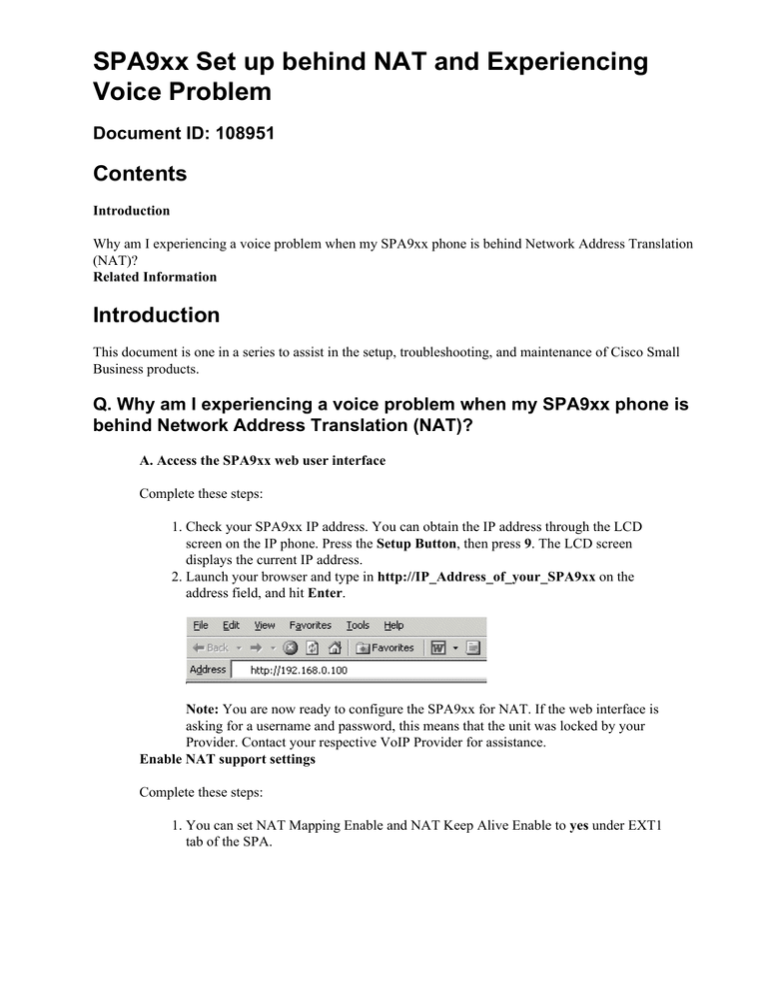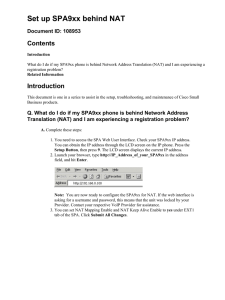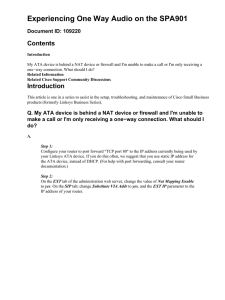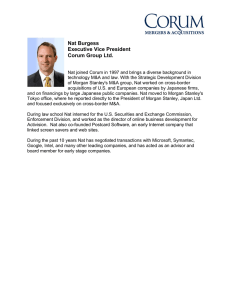
SPA9xx Set up behind NAT and Experiencing
Voice Problem
Document ID: 108951
Contents
Introduction
Why am I experiencing a voice problem when my SPA9xx phone is behind Network Address Translation
(NAT)?
Related Information
Introduction
This document is one in a series to assist in the setup, troubleshooting, and maintenance of Cisco Small
Business products.
Q. Why am I experiencing a voice problem when my SPA9xx phone is
behind Network Address Translation (NAT)?
A. Access the SPA9xx web user interface
Complete these steps:
1. Check your SPA9xx IP address. You can obtain the IP address through the LCD
screen on the IP phone. Press the Setup Button, then press 9. The LCD screen
displays the current IP address.
2. Launch your browser and type in http://IP_Address_of_your_SPA9xx on the
address field, and hit Enter.
Note: You are now ready to configure the SPA9xx for NAT. If the web interface is
asking for a username and password, this means that the unit was locked by your
Provider. Contact your respective VoIP Provider for assistance.
Enable NAT support settings
Complete these steps:
1. You can set NAT Mapping Enable and NAT Keep Alive Enable to yes under EXT1
tab of the SPA.
Click Submit All Changes.
2. Alternatively, if the SIP server registering the SPA9xx supports NAT, you can use
Outbound Proxy configuration of the SPA in order to connect to it.
3. The SPA product also supports STUN (Simple Traversal of UDP through NAT)
protocol. Under the SIP tab, look for NAT Support Parameters. On STUN Server
field, place your STUN server address, and set Substitute VIA Addr and STUN
Enable to yes. Place your WAN IP address on EXT IP, and click Submit All
Changes.
Note: STUN will not work if you have a symmetric NAT. If you enable the debug
through syslog, and set STUN Test Enable to yes, the SPA product will print
information about whether or not you have a symmetric NAT.
On your NAT, you need to unblock UDP ports 5060, 5061, and the port range from
16384−16482. You might also need to disable "SPI" if there is such a function in
your firewall.
Related Information
• Technical Support & Documentation − Cisco Systems
Contacts & Feedback | Help | Site Map
© 2013 − 2014 Cisco Systems, Inc. All rights reserved. Terms & Conditions | Privacy Statement | Cookie Policy | Trademarks of
Cisco Systems, Inc.
Updated: Dec 12, 2008
Document ID: 108951






